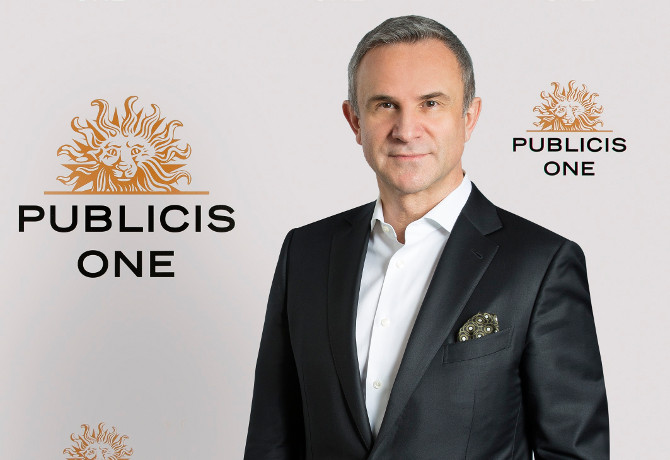One year after its launch, Jarek Ziebinski explains to M&M Global why he believes Publicis One is developing the agency model of the future.

Maurice Levy’s top-to-toe restructure of Publicis Groupe in December 2015 grabbed the headlines for many reasons, not least the creation of four broad ‘hubs’ for communications, media, technology and healthcare.
While the attention has been focused on changes to agencies like Saatchu & Saatchi and Starcom, and speculation over who would take over from Levy as chief executive – Arthur Sadoun was finally confirmed as his successor last month – the spotlight was kept away from Publicis One, a new global operating model for the group’s small and medium-sized markets.
Mimicking Publicis’ new tagline, ‘The Power of One’, the concept is quietly revolutionary: in all geographical territories outside of Publicis’ top 20 markets, its agency brands are brought together in a single location, with one CEO, one P&L, one legal entity and one back-office function.
“The Publicis One model is to make our brands connect and collaborate. We don’t have brands in a silo, doing their own thing in isolation”
Except, of course, it is not that simple.
Agencies must remain plugged into their respective global networks, servicing international clients. Brands focused on areas as diverse as production, media buying, app development and data management must find a way to work together. And what works in sophisticated markets like South Korea and the Netherlands is unlikely to work in developing economies.
Despite these hurdles, one year on from its creation, Publicis One chief executive Jarek Ziebinski is feeling optimistic about the idea of delivering “specialisation and integration” to clients.
A new way of working
With more than 8,000 employees in 55 countries – 95 if one includes affiliation-led markets – the enterprise has certainly been quick to scale. Leadership teams have been appointed in all locations, most recently in Turkey and Japan.
By avoiding the group’s top 20 markets, and all the “complexity” that comes with larger scale, Ziebinski says the company has been able to speed up the implementation of the Publicis One model. And while it does not mean the end of agency brands, it does require a new way of working.
“Under the Publicis One umbrella, we go to market with portfolio brands. All these brands represent huge value – to our clients, to our employees, and to us. To make sure we sustain this value, we make sure the brands stay connected with the respective networks – for culture, for expertise, for the latest research, for tools. That is working pretty well,” says Ziebinski.
“However, what we do differently in the Publicis One model is we make those brands connect and collaborate. We don’t have brands in a silo, doing their own thing in isolation. That is where we see brands strengthening themselves. Working together is a much more powerful idea than working separately.”
If the brands themselves retain such importance, one might question what role Publicis One itself plays, other than purely as a bureaucratic and logistical set-up. Ziebinski disagrees with this interpretation, pointing out that ‘clusters’ have been created to encourage complementary Publicis One hubs to work together.
The management has also assigned “centre of excellence” status to numerous locations, to “supply thinking, services and operate across border”, he says.
Fuelled by data
With much of the initial work done to get Publicis One in motion, Ziebinski is happy with the performance of the group over the past year. He suggests that many markets are growing “three to four times faster” under the Publicis One banner, and that it has begun winning new business in the “Publicis One way”, with multiple brands joining forces to create a bespoke offering.
The priority over the coming 12 months will be to refine the model and to it execute it in “more depth and more precisely”, he says, talking up the possibility of a “never-ending story” of tweaks and changes.
Another key focus in 2017, says Ziebinski, will be mastering the conundrum of how best to integrate the group’s data capabilities with its creative services: “I believe that creativity is the single most important source of our competitive advantage in business today, and I think we have great creative potential across Publicis One.
“What we are doing is creating foundations for the ‘Power of One’ model. We are testing it for the world”
“We want to transform our model of creativity, to stretch the canvas by how we are organised, and to bring data to the centre of everything we do. We want data to fuel our creative process. We will use the canvas we have built to enable to data-drive creative model,” he says.
Get that right and Publicis’ new CEO Arthur Sadoun may be tempted to implement the Publicis One model in some of the company’s biggest markets – something Ziebinski believes is eminently possible.
“If you look at huge markets like the US, UK, Germany and France, there is more scale, and with scale there is complexity. This complexity adds to the difficulty of implementing [the Publicis One structure]. However, over time, things may go into our integrated Publicis One model,” he says.
“I believe we are on a mission to build the agency of the future. The agency of the future is not going to be set in stone – we live in a world that is constantly changing. There may be different modifications from the Publicis One model; whatever works for medium-sized markets might not be perfect for huge countries.
“How it will be executed in detail, it may be different. But what we are doing is creating foundations for the ‘Power of One’ model. We are testing it for the world,” he says.







